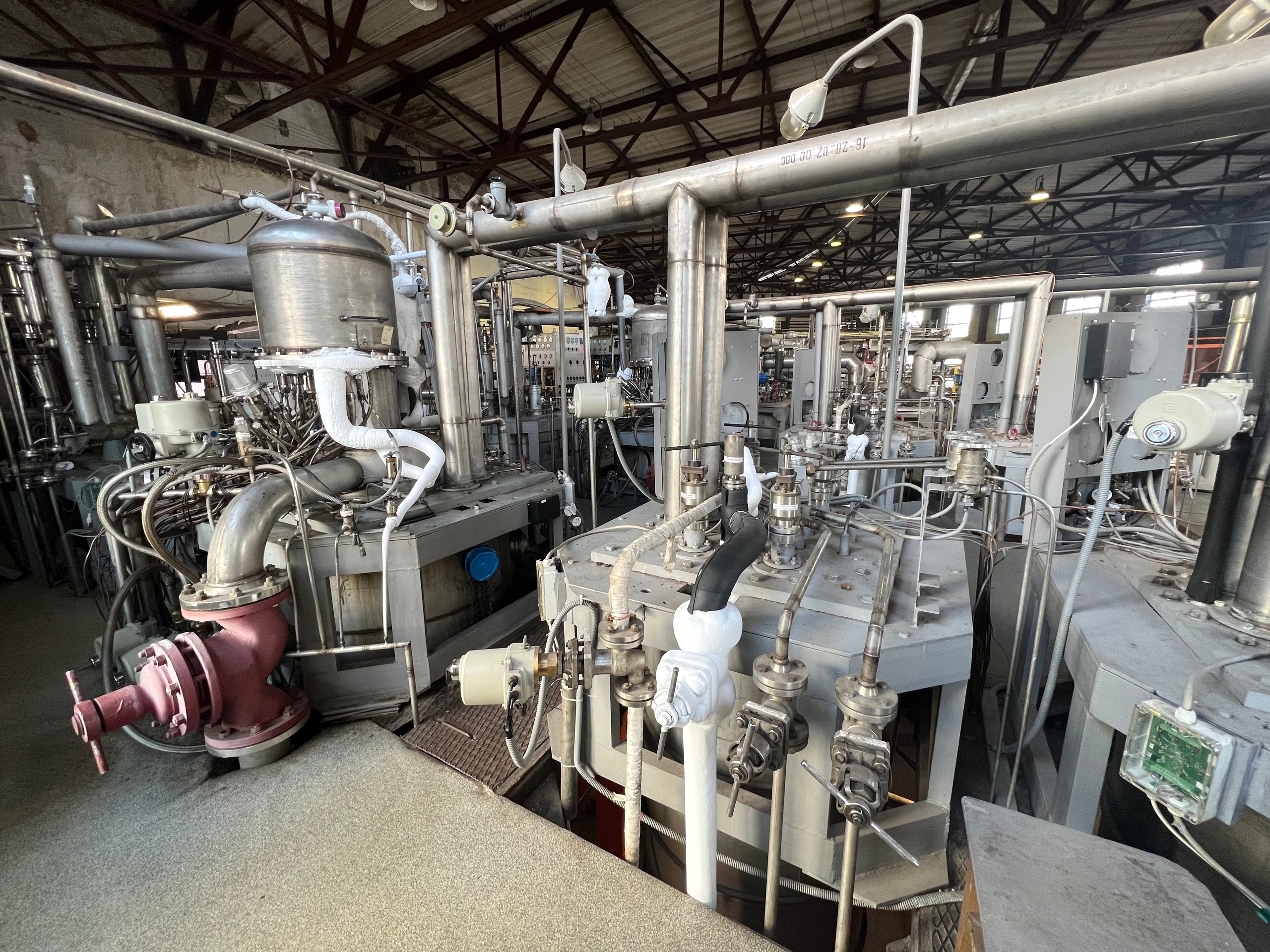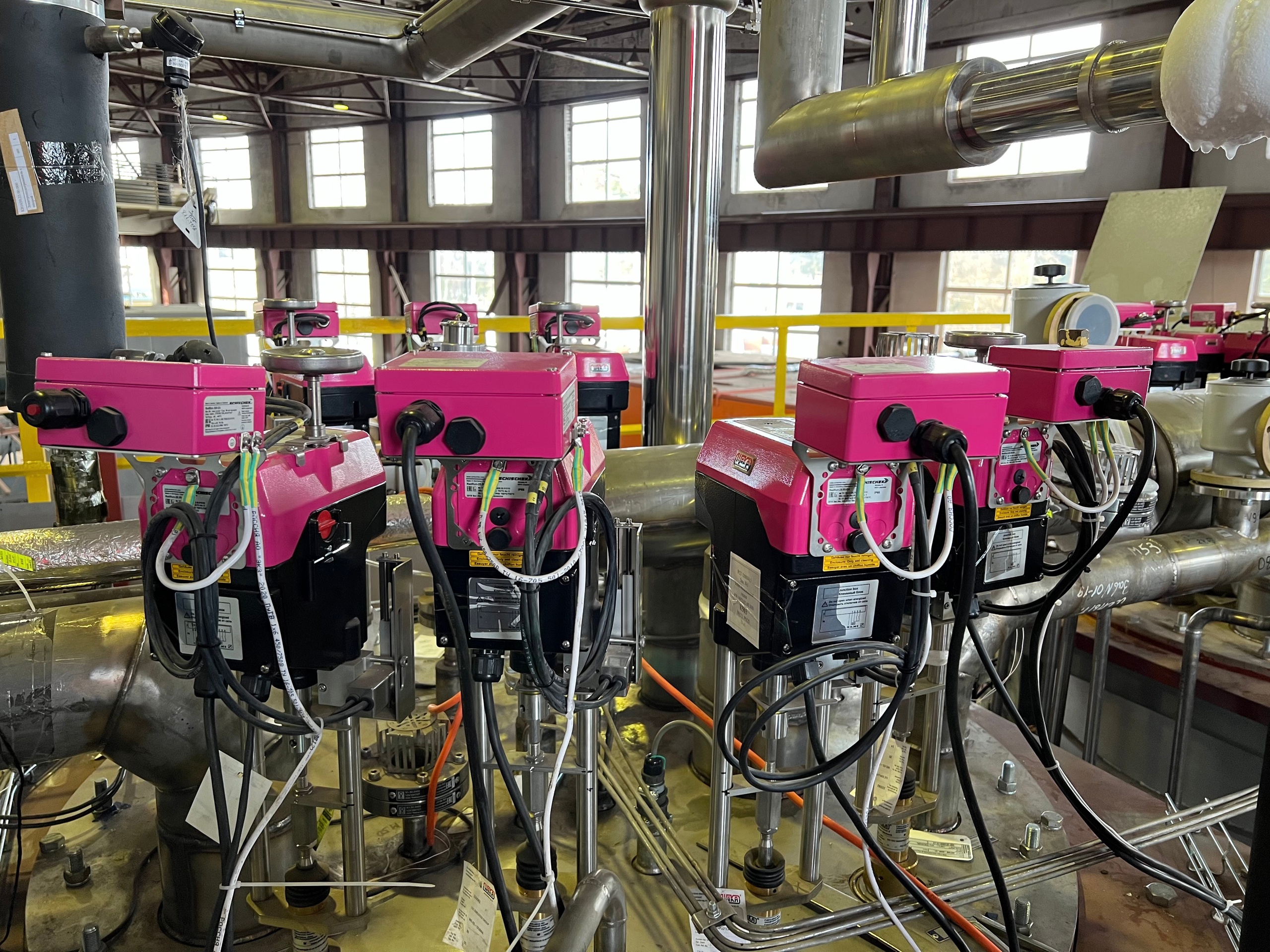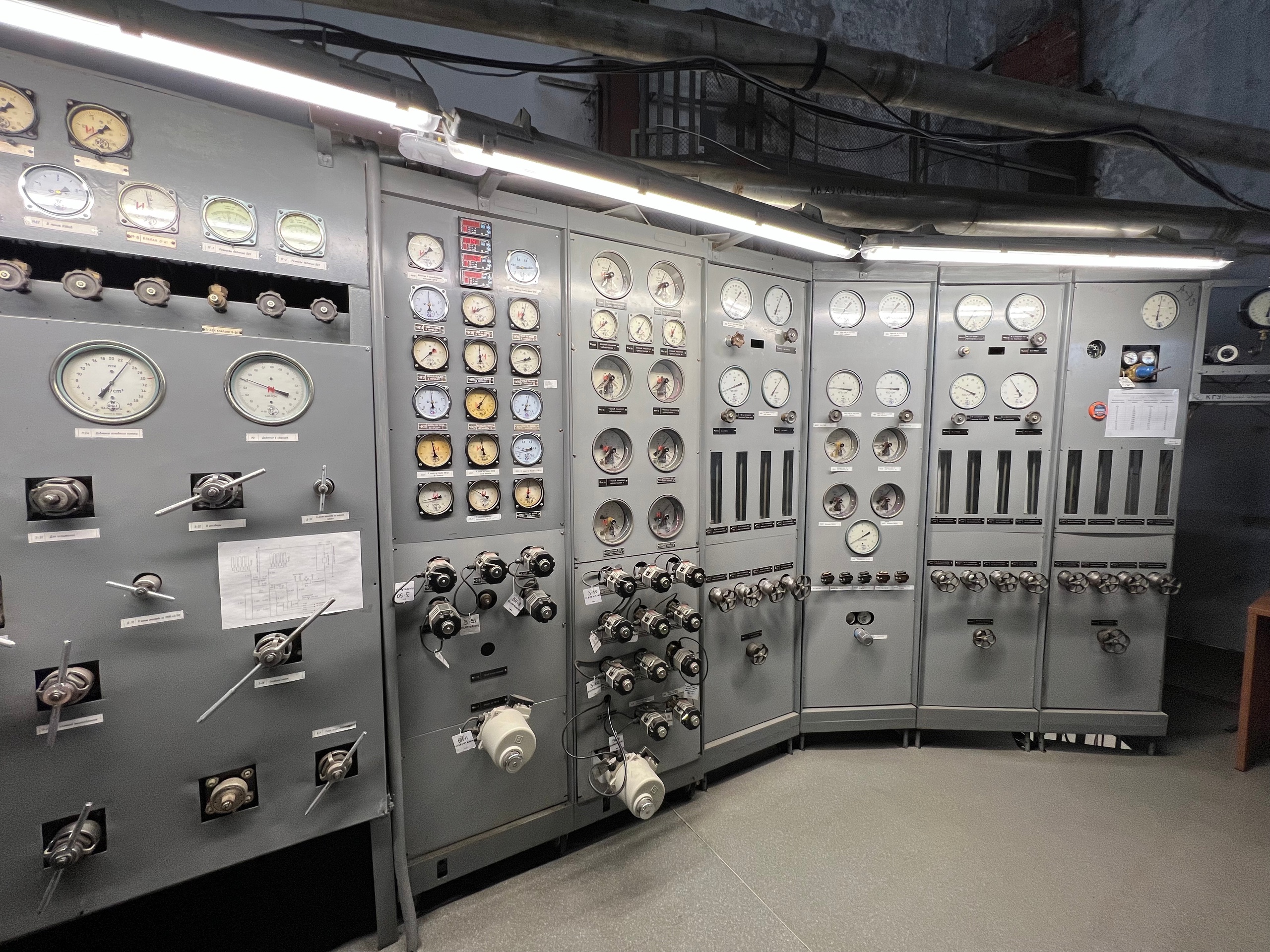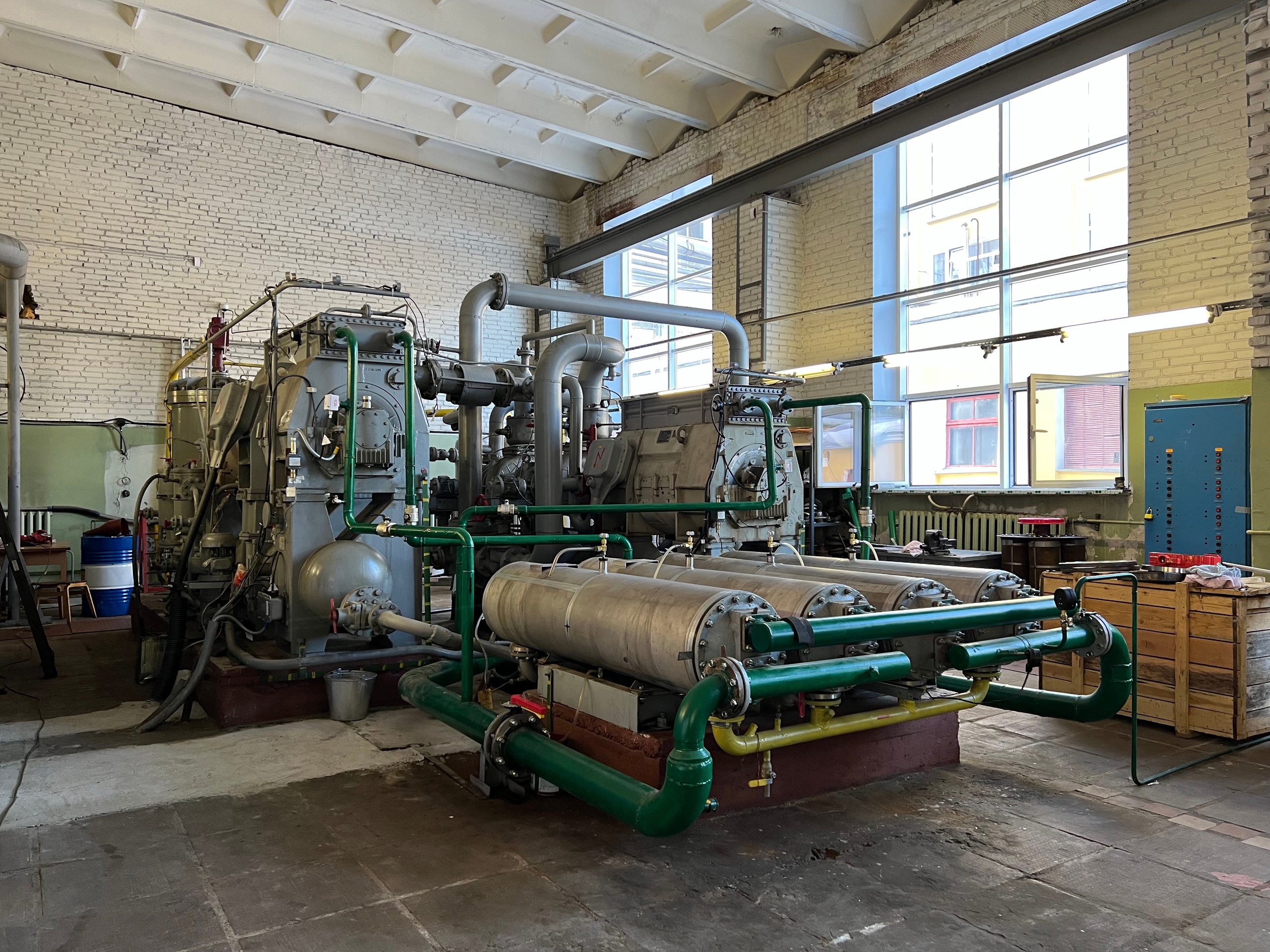Before 5th commissioning run at NICA Complex – operation of cryogenic system
News, 11 September 2023
The cryogenic system of the NICA Accelerator Complex is one of its most important components. Moreover, the cryogenic system of the complex changes from one commissioning run to another, developing and acquiring new elements. Thus, the fourth commissioning run, the longest in the history of the project, brought a lot to the system. Employees of the Scientific Research Cryogenic Department of the Accelerator Division at the Laboratory of High Energy Physics at JINR have managed to solve several complex technical tasks and already set new goals for the upcoming fifth commissioning run.
The cryogenic system of the NICA Accelerator Complex is an intricate closed-cycle technological system with compressor, cryogenic, capacitive, and vacuum equipment. Head of the Cryogenic System Sector of the Accelerator Complex of the Scientific Research Cryogenic Department at VBLHEP JINR Iuliia Mitrofanova spoke about the cryogenic system.
The cryogenic system of the NICA Accelerator Complex is based on the cryogenic system of the Nuclotron. Specialists stage-by-stage cool helium to obtain low temperatures in the system – at first, they cool helium down to 77 K (-196.15 °C) using liquid nitrogen, then they continue cooling in turbo expanders and liquefy helium at a temperature of 4.5 K (-268.65 °C) – the operating temperature of the magnets of the NICA Accelerator Complex. This is the very temperature that is required to obtain the necessary value of the magnetic field and ensure the design parameters of accelerators.
“Nitrogen is a relatively inexpensive source of cold, which allows scientists to obtain a temperature of 77 K. To continue cooling below this temperature, it is necessary to use expansion machines – turbo expanders. Helium, compressed to a pressure of 21–25 atmospheres, is transported to a guiding turbine and starts rotating it. At the same time, the gas loses internal energy and cools down,” Iuliia Mitrofanova explained.
The peculiarity of the NICA cryogenic system is that specialists cool down magnets using boiling helium. It allows them to use the heat of evaporation of the cryogenic liquid and effectively remove the heat release from superconducting windings. At the stage of helium liquefaction, researchers use vapor-liquid turbo expanders in the cryogenic facilities of the complex that increase the refrigeration capacity of the system by 25%. This equipment is a unique development by the Geliymash R&D company, as the scientist highlighted.
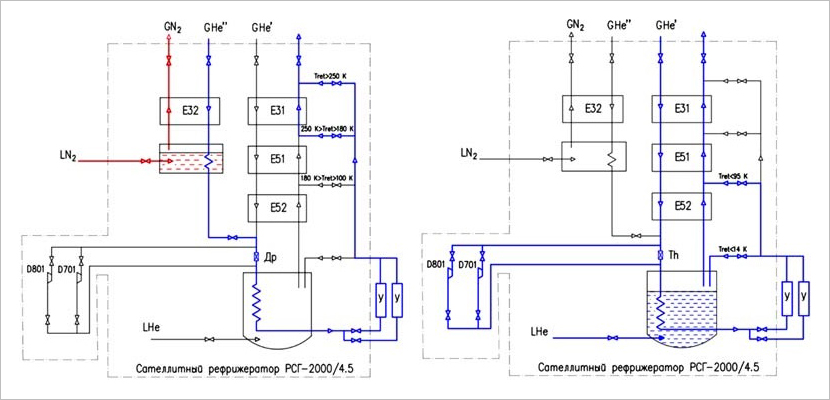 Fig. 1. Schematic diagram of Booster cooling: the first (on the left) and second (on the right) stages of cooling
Fig. 1. Schematic diagram of Booster cooling: the first (on the left) and second (on the right) stages of cooling
Specialists began the upgrade of the cryogenic system of the Nuclotron in 2012 with the installation of the helium liquefier OG-1000 commissioned in 2016 and the construction of the building for a new cryogenic compressor station.
Two helium refrigerators KGU-1600/4.5 produce the refrigerating capacity of the cryogenic system that equals 4,000 watts. The commissioning of the superconducting accelerator Booster and the collider requires increasing this figure up to 10,000 watts, which will be achieved by the commissioning of three new RSG-2000/4.5 satellite helium refrigerators of 2,000 watts each. One of them will cool the Booster and the other two – the collider.
To ensure the operation of the new refrigerators, specialists have commissioned the helium liquefier OG-1000 with a capacity of 1,000 l/h of liquid helium. To supply cryogenic facilities with compressed helium, the number of compressor equipment has also been expanded. Specialists use two screw compressors Kaskad–80/25 with a capacity of 5,000 Nm³/h each for the Nuclotron. Two additional compressors Kaskad-110/25 with a capacity of 6,600 Nm³/h each will be put into operation for the NICA Complex. Specialists have renewed the piston compressor equipment with a small capacity of 750-1,200 Nm³/h. Thus, reliable four-stage compressor facilities are now used instead of three-stage ones.
Due to the use of oil-lubricated machines in the compression system, it is necessary to purify compressed helium from oil vapors and moisture at the output of compressors before its transportation to refrigerators. For this purpose, specialists used one draining and oil-purification unit MO-800 in the cryogenic system of the Nuclotron. As for the cryogenic system of NICA, there will be four such units. To maintain a certain overpressure along the suction line of the compressors in the Nuclotron cryogenic system, researchers used an oil-filled gas holder with a volume of 20 m³. The gas holder mentioned above has been replaced by a 1,000 m³ gas holder capable of ensuring simultaneous operation of two or more screw compressors. In addition, specialists are creating a new closed-cycle 2,300 kg/h nitrogen cryogenic system for the NICA Complex. “Like the helium system, it includes compressor equipment, a gas holder, a liquefier, nitrogen re-condensers, etc. Its launch will ensure the independence of the accelerator complex from the supply of liquid nitrogen from outside and will increase its energy efficiency,” Iuliia Mitrofanova noted.
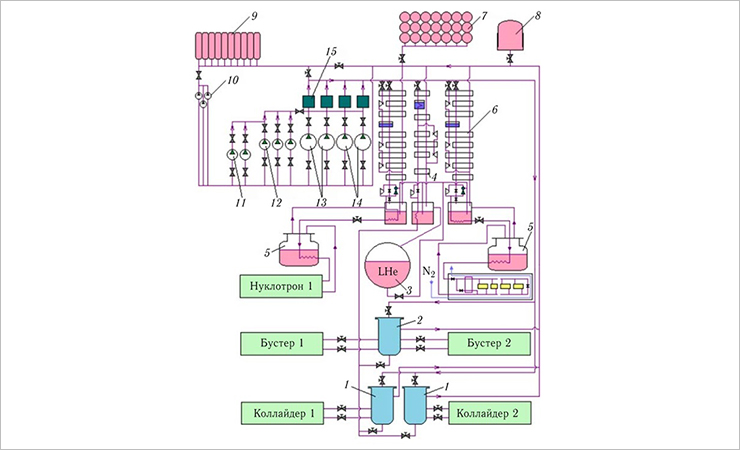 Fig. 2. Schematic flow diagram of helium cryogenic system for the NICA Complex: 1 – satellite refrigerator of the collider; 2 – satellite refrigerator of the Booster; 3 – cryogenic helium tank; 4 – helium liquefier; 5 – Nuclotron separator; 6 – helium refrigerator; 7, 8 – gas holders; 9 – compressed-helium reservoirs; 10, 11, 12 – piston compressors; 13, 14 – screw compressor aggregates; 15 – draining and oil-purification unit
Fig. 2. Schematic flow diagram of helium cryogenic system for the NICA Complex: 1 – satellite refrigerator of the collider; 2 – satellite refrigerator of the Booster; 3 – cryogenic helium tank; 4 – helium liquefier; 5 – Nuclotron separator; 6 – helium refrigerator; 7, 8 – gas holders; 9 – compressed-helium reservoirs; 10, 11, 12 – piston compressors; 13, 14 – screw compressor aggregates; 15 – draining and oil-purification unit
The NICA cryogenic system becomes perfect and complete with each new commissioning run.
Thus, according to the results of the third commissioning run (in January – March 2022), specialists installed heat-insulated bypass lines (bypass pipelines) of helium separators of the Booster that excluded parasitic heat exchange of direct and reverse helium flows during the accelerator cooling from 300 K (26.85 °C) down to 4.5 K. Heat exchange occurs in separators between a cold flow of helium that is used to cool the accelerator and a warmer one returning from it. During the third run, the cooling time of the Booster turned out to be twice the calculated value – 14 days. Bypass lines of separators allowed specialists to eliminate the problem and reduced the estimated cooling time of the accelerator to eight days during the fourth run (in September 2022 – February 2023).
During the third run, specialists cooled the magnet cryostat system (MCS) of the Nuclotron with a Lambertson magnet installed in it. The magnet ensures the beam transportation from the Booster to the Nuclotron. The test cooling time of the upgraded MCS of the Nuclotron was 10 days. The run resulted in the revision of the cooling technology of the Nuclotron. Thus, the left ring of the accelerator should be cooled with helium gas at a temperature of 15-20 K until the temperature of the Lambertson magnet reaches values of 50-60 K. Only afterwards, specialists can use helium with a lower temperature to cool down the magnets. Taking into account this technology, the cooling time of the Nuclotron was 7 days in the fourth run (2 days more than the calculated time due to the installation of the Lambertson magnet in the left semi-ring of the Nuclotron).
“During the fourth run, the cryogenic complex provided the necessary refrigerating capacity and the cooling helium consumption through the magnet cryostat system of the Booster and the Nuclotron. Based on the results of the run, a plan of measures was developed to eliminate the identified problems such as the installation of additional filters and oil separators, the organization of routine maintenance of the equipment of the cryogenic complex, and so on,” Iuliia Mitrofanova commented. Implementing the system, a team of employees of the Scientific Research Cryogenic Department of the Accelerator Division at VBLHEP JINR faced problems with the delivery of some components, foremost, cryogenic valves operating at temperatures of 4.5–77 K. Delivery delays increase the production time of cryogenic pipelines, which include cryogenic valves.
The cryogenic system of the collider is based on two satellite refrigerators RSG-2000/4.5 located in building 17, and central helium liquefier OG–1000 in building 1 B. Each of the refrigerators cools the corresponding semi-ring of the collider and operates using liquid helium from the central liquefier. The helium liquefier OG-1000 started operating in 2016. Specialists are conducting commissioning on the satellite refrigerators. They are creating a cryogenic pipeline to transport liquid helium from OG-1000 to the refrigerators RSG-2000/4.5 of the collider with a total length of ~ 280 m. They are also designing cryogenic pipelines to transport liquid helium from a refrigerator RSG-2000/4.5 to the east semi-ring of the collider. To ensure the necessary consumption of compressed helium transported to the refrigerators of the collider, two screw compressors Kaskad–110/30 have been installed in the building of the new cryogenic compressor station. The commissioning of the compressors is scheduled for the 4th quarter of 2023. The compressed helium purification system at the output of these compressors includes two draining and oil-purification units MO–800 located in building 1 B. The units have already been installed, and their commissioning is scheduled for the 1st quarter of 2024.




